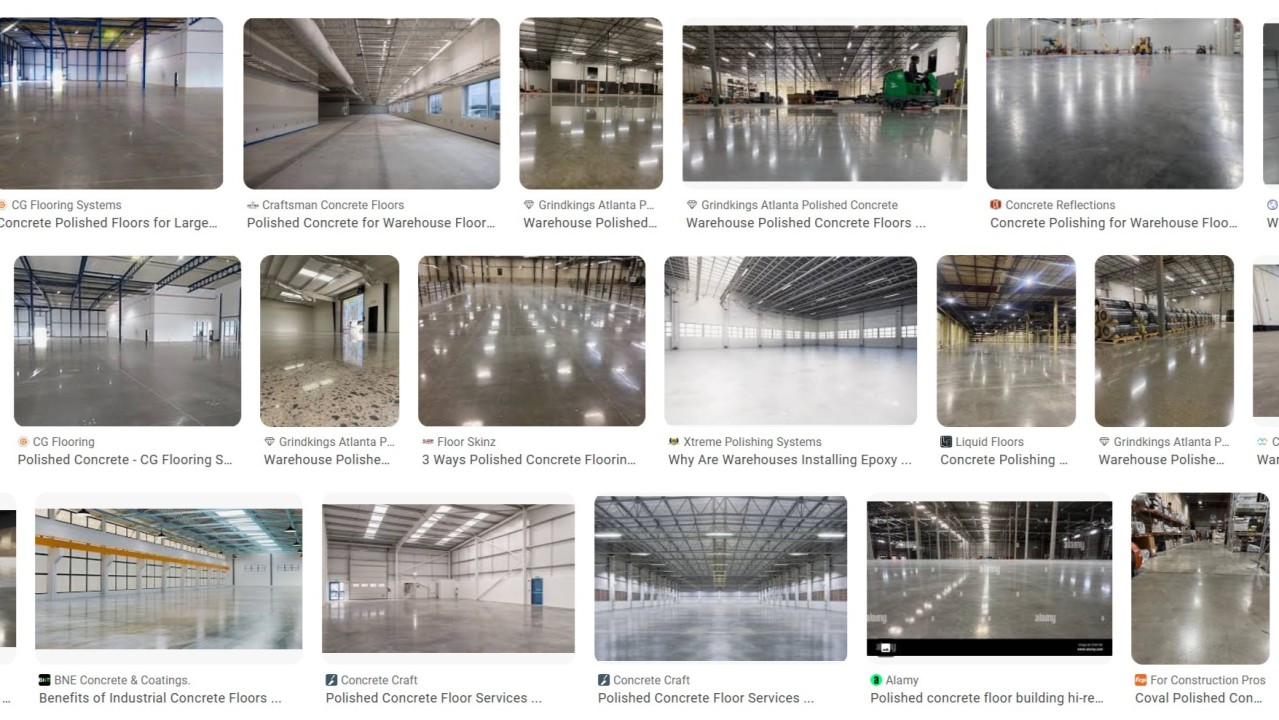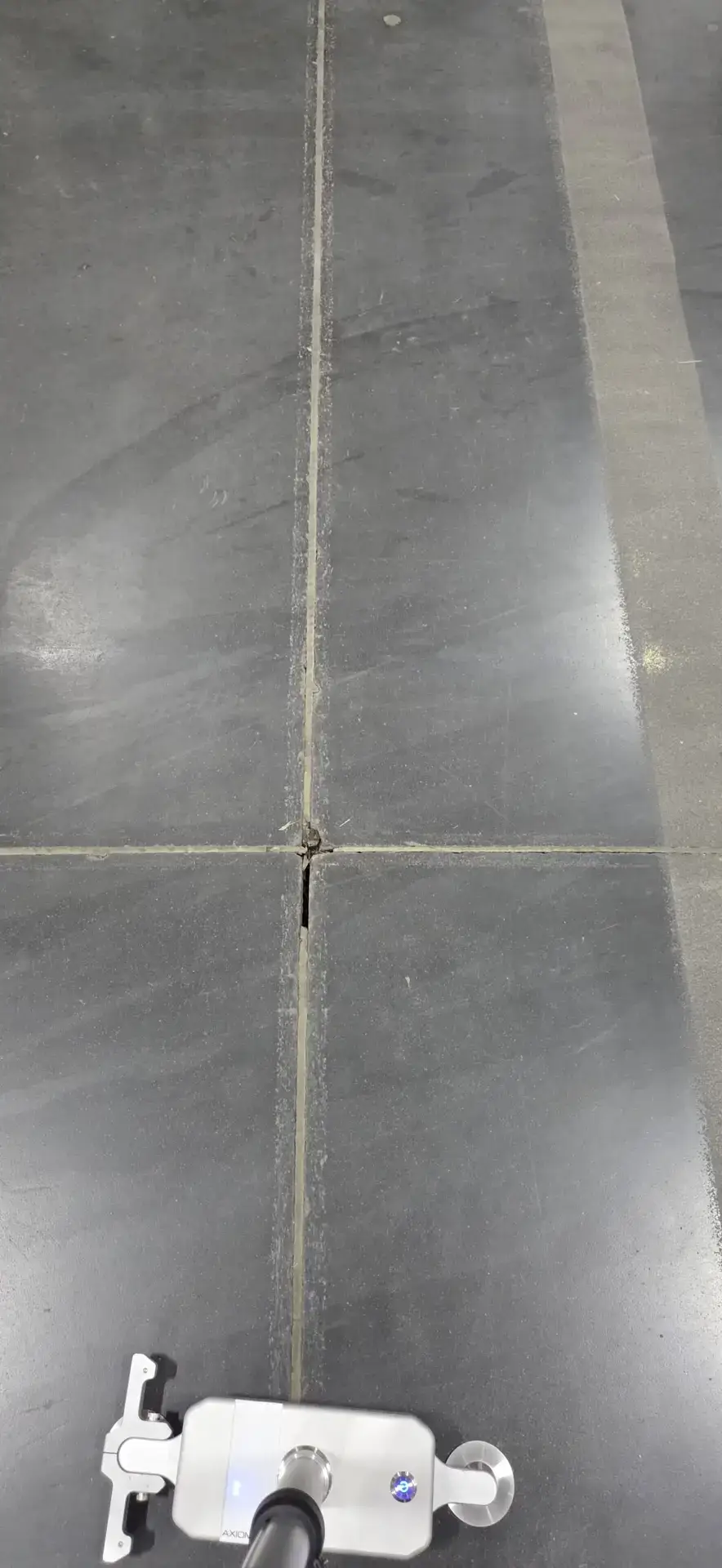
Bill Bencker
Senior Specialty Concrete Industry Expert | Owner Industrial Floor Repair and Bencker Consulting and Contracting – Providing Leadership to Clients from Conception to Completion | Team Development | Integrity Driven Results
May 12th, 2025
World class polish concrete floors with a consolidated service provider
Polished concrete has become a popular choice for commercial floors due to its durability, aesthetic appeal, and low maintenance. However, achieving a high-quality polished concrete finish is not without its challenges, particularly related to the initial concrete placement and finishing processes. Finding an experienced contractor that provides both is possible. Here are several key issues that can affect the outcome of polished concrete:
1. Mix Design and Aggregate Quality
- Inconsistent Mix: The concrete mix consistency is crucial. The design and make up including pozzolans and additives is crucial, know your mix! Water to cement ratios are critical and out of tolerance ratios can lead to problems like shrinkage, cracking, or weak areas in the slab. An ideal mix should provide enough workability without compromising strength. The responsibility of having a consistent mix delivery falls upon the ready mix supplier. From there, the placement and finishing team needs to handle the concrete in a very consistent manner. Paying attention to the age of each batch, the consistency of placement techniques, and all phases of finishing.
- Aggregate Exposure: For polished concrete, the type and quality of aggregates are vital. Poor quality or inconsistent aggregates can lead to a patchy appearance after polishing. Design teams should investigate the Ready Mix Producer’s available aggregates to verify they are of acceptable appearance. Paying to reserve a pile of aggregate on the mix plants grounds will provide the best results in the delivery of the planned appearance. The mix should be designed to ensure good aggregate exposure without compromising the concrete’s structural integrity. Much of the issues that arise with the finished aggregate exposure are directly related to how and how much the concrete is “handled” at time of placement. Inconsistencies during placement onto the substrate and overworking the initial placement often leads to inconsistent aggregate availability at the time of grinding. The desired aggregate can be sporadically buried under a layer of fines and mortar paste. While larger aggregate exposure requires the polishing contractor to knowingly start with an acceptable cutting tool. They are not responsible for cutting down to unavailable aggregate or cutting massively deeper ( extra 1/16″+) across an entire floor without being justly compensated.
2. Placement Techniques
- Transport and placement on the substrate: Each load of concrete, be it by the truck, the buggy or the wheel barrow needs to be handled nearly identical. Even with a consistent mix, a longer path or more bumps with a buggy or wheel barrow can segregate the mix before it even hits the ground. Pumping concrete can and often does lead to undesirable segregation of the aggregate in the pump line and on the ground. Direct chute or telebelt placements typically yields the most consistent mix to the ground.
- Initial strike-off and Improper Vibration: As the mix goes on the ground it should be at a consistent, higher yet very close to final height. In smaller spaces hand raking/ packing the concrete in place with a concrete placer will often bury the aggregate in a small, random, unsightly pattern. When hand screeding is necessary, the screed should be placed as close to the starting edge as possible and pulled straight back at a level height or kept on the surface flat, and shook side to side as it is pulled flat. Combing with a screed is NOT an acceptable method. This is where the placers reaches out, sets the screed down and then pulls while rolling the bottom edge of the screed bar to pull the concrete back in waves. This almost always results in waves of varied aggregate exposure seen in the final floor, at the length of the screed which they were using. After the initial strike no one should walk back into the placement. If they do the holes should be filled with a fresh shovel of mix. Attempting to close the footprint, even immediately afterwards, often results in the noticeable loss of larger aggregate in the finished floor. After the initial placement the over-vibration or under-vibration during placement can also lead to issues of “lost surface aggregate”, or an unconsolidated mix, which becomes evident after polishing. Proper vibration ensures a uniform, dense concrete that polishes well.
- Troweling: The timing and technique of troweling are critical. Changing industry mix designs also affects tolerances and techniques related to finishing. The use of aids or misting water can be very detrimental to the surface strength of some mixes. Be sure the team has extensive experience with the mix you are delivering to your client. Troweling too early or too late can also lead to fines and mortar burying larger aggregates. It can also affect the concrete’s surface hardness. Edges are best finished with a 24 inch edging power trowel starting with a pan. The weight ratio of this machine “matches” more closely the ratio of the larger machines used throughout the main body of a placement. Hand floating and finishing as the primary method will almost always result in undesirable finish variations. Waiting too long or not having the needed amount of ride-on trowels and/or skilled operators can lead to inconsistencies in the finished surface that are unsightly, and make long term cleaning difficult. It may even create enough height deviation that an employee or customer may trip causing a costly insurance claim. Over-troweling can also create issues at the surface that reducing the potential for an attractive polished finish. Incorrect use of power troweling can burnish the surface too much, making it difficult to achieve the desired polish level. This can also trap bleed water under the surface, leading to potential delamination or blister formation.
- Surface Hardness: The surface needs to be hard enough to polish however incorrect finishing can result in a surface that’s too soft, leading to rapid wear. It is generally a misnomer that hardened 4000-5000 psi concrete mixes can be “too hard” to polish. The pozzolans and additives should be considered, know your mix!, and may push the limits of the diamond tooling used for the initial cut. Wet cutting assists with harder concrete. When wet cutting the polishing contractor will need to have a good slurry containment system in place. Between the tooling and the wet cut technique typical psi’s can be ground and polished with great results.
3. Curing Process
- Inadequate Curing: Proper curing is essential to prevent shrinkage cracking and to ensure the concrete reaches its full potential strength. Curing too quickly or not at all can lead to surface defects visible after polishing, like excessive crazing ( minimal crazing is a typical characteristic of well finished floors) or dusting.
- Moisture Control: Managing moisture during curing is also crucial. Excess moisture can lead to efflorescence, which leaves a white, powdery residue on the surface after polishing.
- Changing mix designs: With changing mix designs evolving throughout the industry, it is necessary to understand not only the placement and finishing characteristics but what is often a variable cure to full strength. Be an expert with the mix you are using! Know your mix!
4. Timing and Environmental Conditions
- Weather Conditions: For the initial placement and finishing. Temperature, humidity, and wind can significantly affect concrete placement and finishing. Cold weather can delay setting times, while hot, dry conditions can cause rapid evaporation, leading to plastic shrinkage cracks. Listen to your placement contractor to assure the best result of the finished floor. The cost of a few days of delay of placement rarely approaches the cost of replacement or repair that you will be responsible to cover for having pushed the placement in unfavorable conditions. The best conditions for the polishing phase occur in acclimated spaces where the control of moisture on and in the concrete slab allow for consistency in the grind, chemical application and refinement stages. Minerals is various water can create efflorescent stains that are difficult and costly to remove.
- Timing of Polishing: If polishing is done too soon after placement, the concrete might not have reached sufficient hardness, leading to a less durable surface and loss or fine and medium aggregates. This requires grouting to repair, which is a substantial additional cost.
The Conclusion
The path to a nearly flawless polished concrete floor is fraught with potential pitfalls related to the initial stages of concrete placement and finishing. Attention to detail in mix design, placement, vibration, curing, and finishing techniques is paramount. Contractors and designers need to work closely to specify and execute these processes correctly. Moreover, understanding and adapting to environmental conditions plays a significant role in achieving the desired polished concrete effect. Working with Consultant to find a provider of both industry leading placement and finishing as well as CPC Craftsman Certified Quality Polishing, positions your project for success. IFR and Bencker Consulting’s knowledge and experience in concrete technology, along with precise execution, are key to overcoming the challenges above, resulting in polished concrete floors that are both beautiful, durable and functional.



